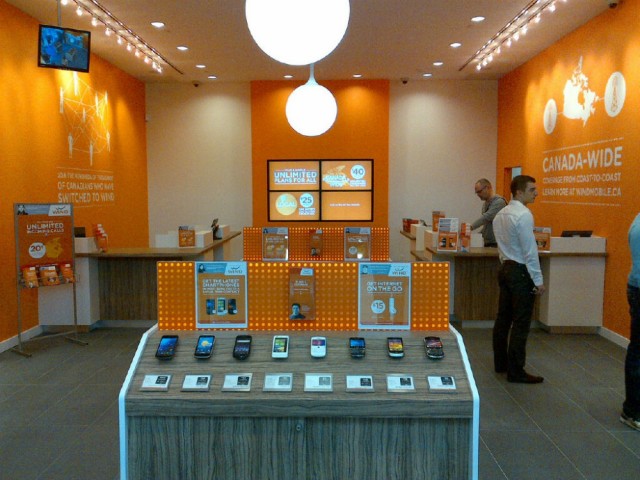
WIND Mobile stunned the Canadian telecom industry yesterday when it unveiled a $15 monthly add-on that offers unlimited data while roaming in the United States. While the number itself is low — WIND is well known for undercutting the incumbents domestically, too — it raises questions as to why the company can offer seemingly cheaper data rates for Canadians travelling to the United States than it can to its own customers travelling in an “Away” zone.
WIND determines its Home and Away zones based on coverages areas that include its own towers, which use 3G technology called HSPA+ over AWS spectrum, and those of its domestic roaming partner, Rogers. The five-year contract that two companies signed when WIND went live in 2009 is set to expire, and the 2G data speeds offered to Canadians at $1/MB signal a disparity between the relationship incumbents like Rogers have with new entrants like WIND and international roaming partners like AT&T.
The Canadian government has promised to regulate domestic roaming fees, capping the number at what they charge their own customers for roaming. In a December press release, Industry Minister James Moore said, “The roaming rates that Canada’s largest wireless companies are charging other domestic providers can be more than 10 times what they charge their own customers,” and that Canadians have been “hit in the face pretty hard” by these fees.
Since WIND Mobile launched its 3G service, incumbents Bell and TELUS have migrated from slower CDMA networks to faster and less expensive-to-deploy HSPA+ and, now, LTE networks. Since WIND’s parent company, Globalive, pulled out of the 700Mhz spectrum, the only real way to ensure the continued growth of its network will be to renegotiate domestic roaming terms with one (or more) or the incumbents. While WIND’s 3G speeds are, in most equivalent urban areas, comparable to those of the incumbents, the latter enjoy enough spectrum to deploy LTE on separate frequencies.
It must be noted that the CRTC has the final say in regulating domestic roaming rates between Canadian carriers, and the Canadian government’s alteration to the Telecommunications Act is merely a stopgap. In a call for comment submission by the Competition Bureau this week, incumbents were called out on their “unfair discrimination [and] undue preference, and it is both necessary and appropriate for the CRTC to intervene and stop this behaviour.” The Bureau observes that roaming agreements between incumbents and new entrants that result in shared tower and network access, while mandatory by law, “are a strategic tool that incumbents can use to protect their market power.”
But the price of offering data has declined since 2009, and as incumbents like Rogers move users to LTE for data, and prepare to migrate voice calls to VoLTE, it will be in the interests of all companies involved to find compromise on domestic roaming voice and data rates. In other words, expect WIND Mobile, even without 700Mhz spectrum, to offer better national service beginning in 2014.
MobileSyrup may earn a commission from purchases made via our links, which helps fund the journalism we provide free on our website. These links do not influence our editorial content. Support us here.


